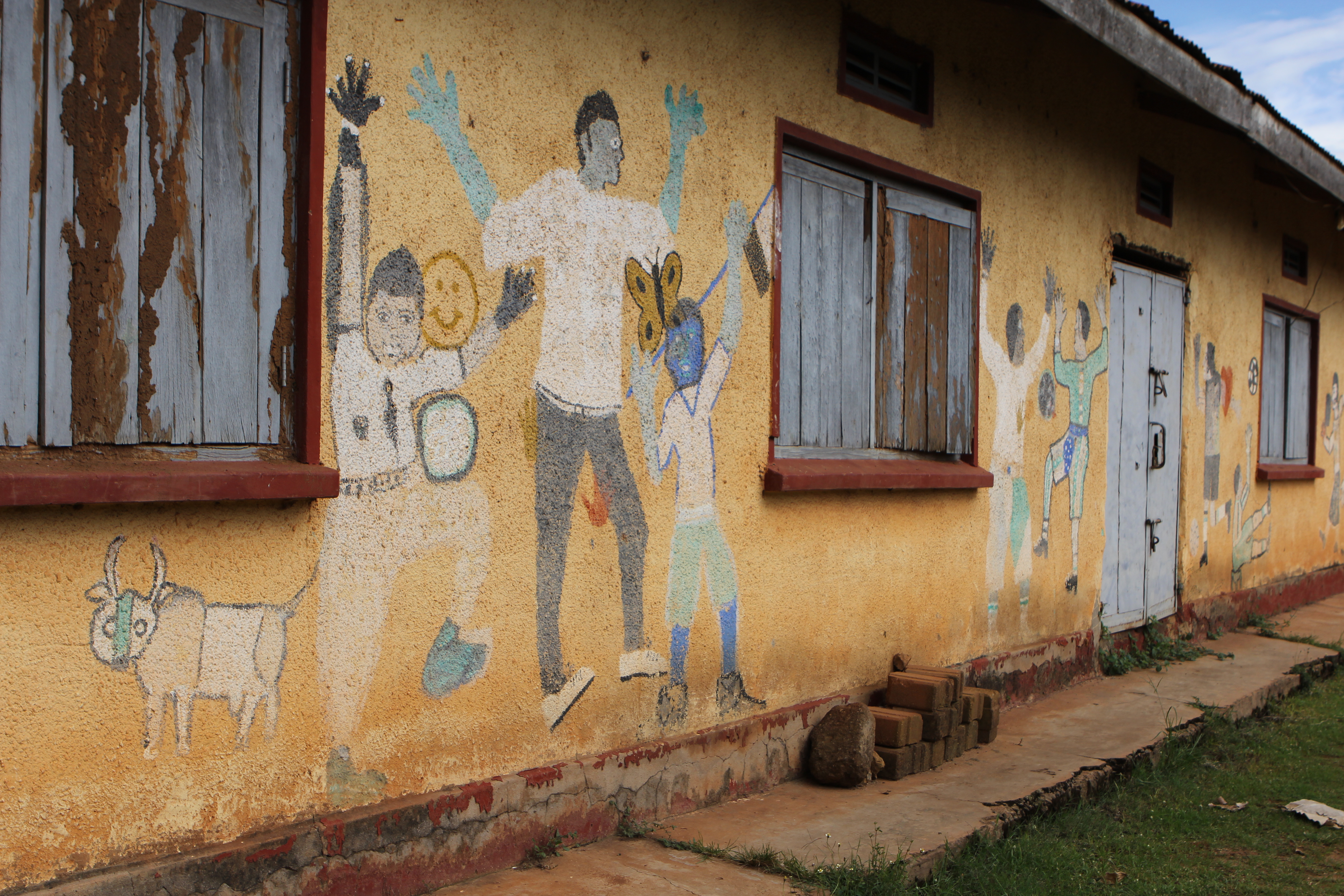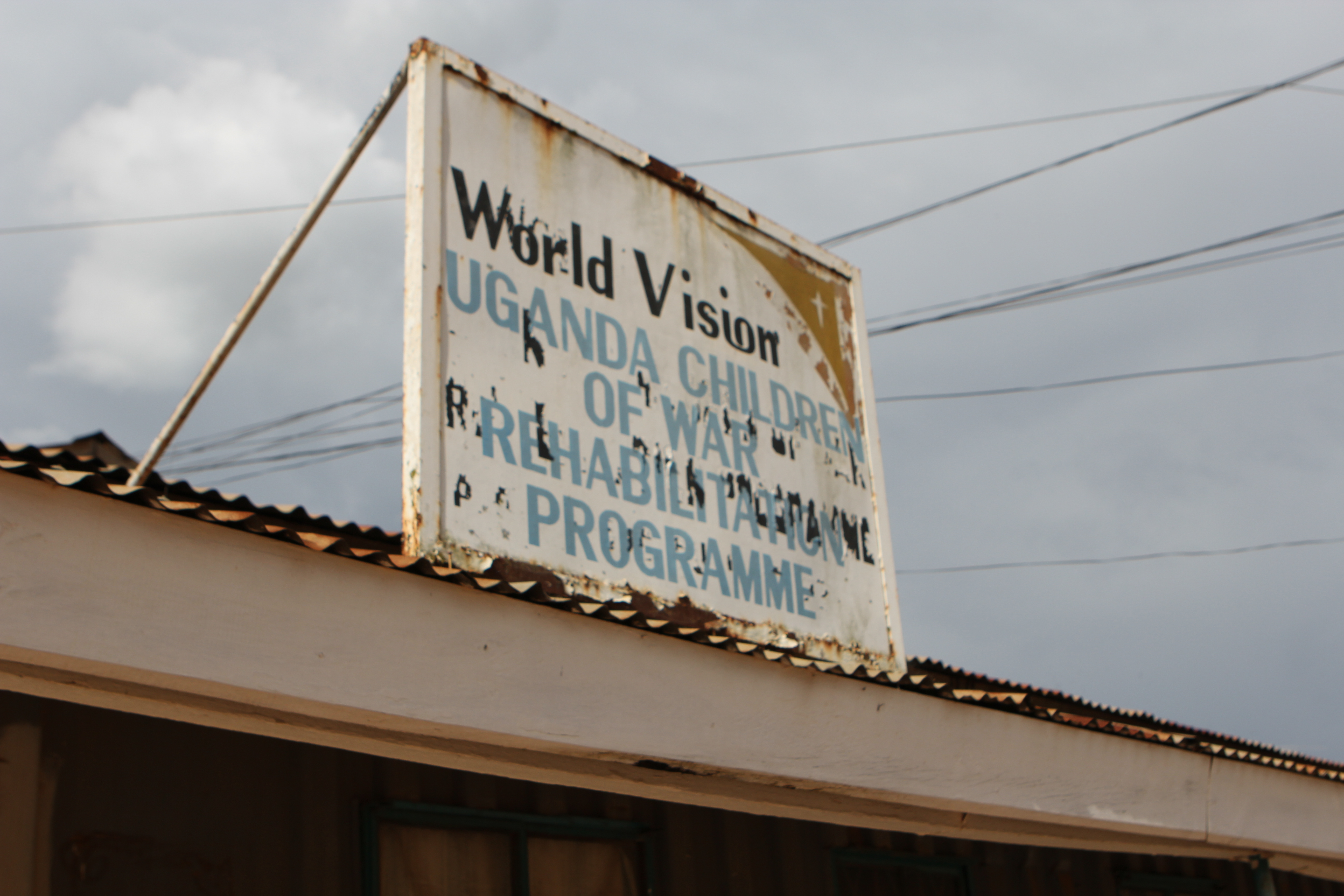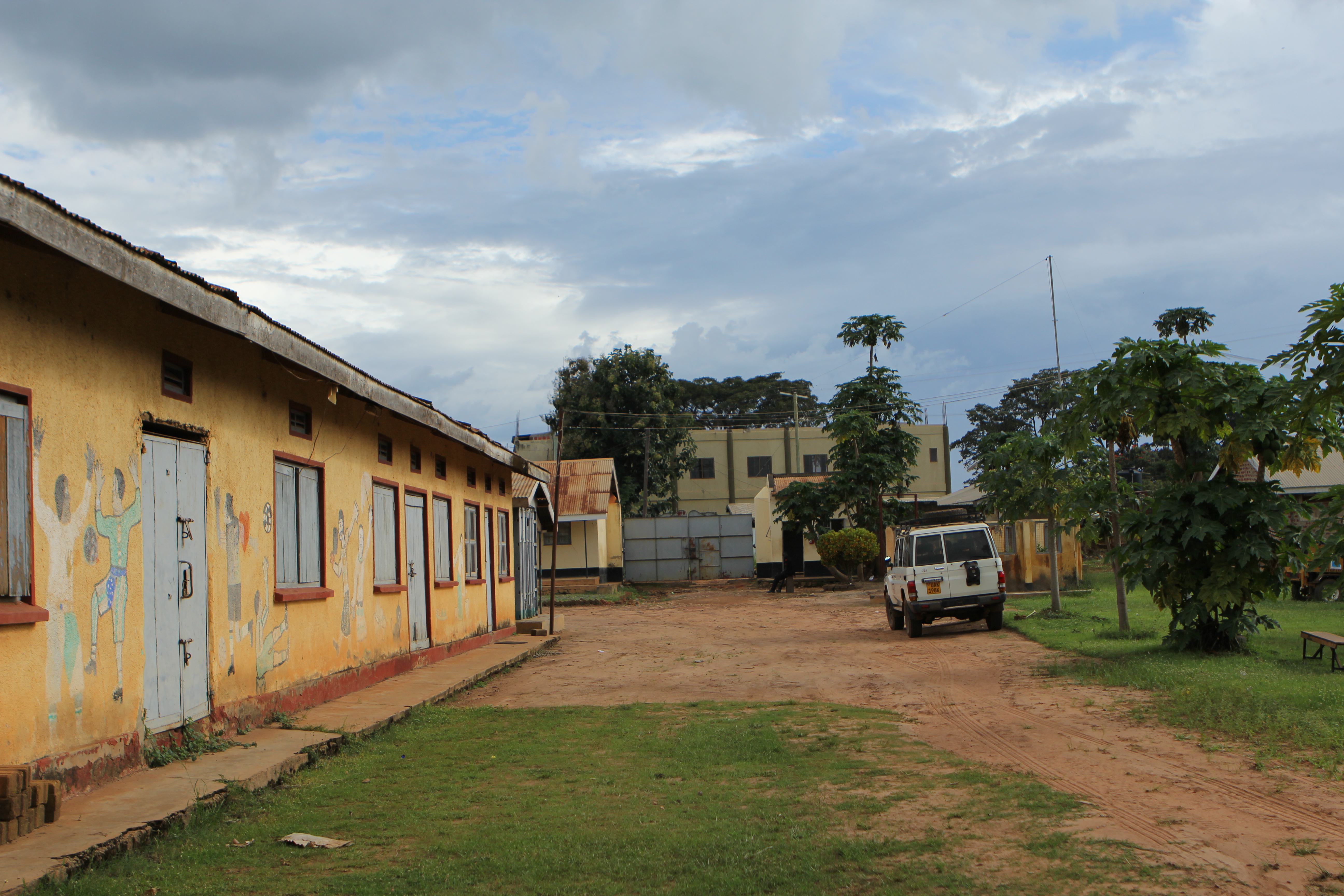Seeing a cow, a sports car and a soccer player interacting harmoniously is not a typical site. Unless one is looking at the walls of the World Vision Uganda Children of War Rehabilitation center in Gulu, Uganda.
Art therapy has proven to be an incredibly effective method of counseling for youth who have and are going through the center.
“They tend to speak better through drawings. Then the pictures are important because, as they stay in the center, you find that the drawings also change. In the second or third week they tend to draw the center, meaning that the mindset is getting now off from the bush to the center activities,” Christine Oroma, a counselor at the center, said.
Since it was first established at the height of the LRA conflict in 1995, the rehabilitation center has served as a short term home to over 14,000 young people. While other centers in Gulu cater to women and children, World Vision has typically served young men, an incredibly important demographic of formerly abducted persons.
After a spike in LRA escapes in recent years, ICU recognized the need to reestablish rehabilitation and reintegration programs for persons returning home to Uganda. Rather than start from square one by building a new center entirely, World Vision reopened its doors through a partnership with Invisible Children Uganda.
Christine first joined World Vision in 2004 and her years of experience at the center are clear when she describes the rehabilitation process.
When a new person arrives at the center, he or she goes through an intake process. A counselor takes down basic information on the returnee including where he or she was abducted from, their experience in the bush, information about their escape, medical information and parents’ names. Each individual is provided with basic items including a mattress and clothing. The center then provides counseling, medical support, and ultimately helps the defectors to reunite with their families.
“After the intake process, we also do rapport building. You talk to them to make them get used to you as part of the counseling process,” she said. “We realize it is very important to know the feelings of the child. That is part of healing.”
But once reunited, the reintegration process is not complete. World Vision and Invisible Children staff continue to check in with returnees to gather information about their relationships with their families and communities and to provide both physical and psychosocial support.
These days, there is only one full-time resident at the center. Sometimes, other returnees visit for counseling sessions and medical support. In the past, it has been home to more than 600 youth at any given time and, according the Christine, the staff continues to prepare in case a larger group of LRA members defects in the near future.



Think people should hear about this?